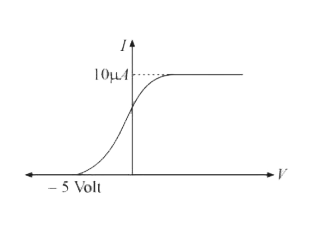A : There is almost no time-lag between the incidence of light and the emission of photoelectrons .
R : A photon transfer almost all its energy to a single electron in a metal .
If both Assertion & Reason are ture and the reason is the correct explanation of the assertion , then mark (1) .
If both Assertion & Reason are true but the reason is not the correct explanation of the assertion , then mark (2) .
If Assertion is true statement but Reason is false , then mark (3)
If both Assertion and Reason are false statements , then mark (4) .
The correct Answer is:A
Step by step video & image solution for A : There is almost no time-lag between the incidence of light and the emission of photoelectrons . R : A photon transfer almost all its energy to a single electron in a metal . by Physics experts to help you in doubts & scoring excellent marks in Class 12 exams.
Updated on:21/07/2023Topper's Solved these Questions
- ALTERNATING CURRENT BOOK - AAKASH INSTITUTE ENGLISHCHAPTER - ALTERNATING CURRENT EXERCISE - Try Yourself
15 Videos
- ALTERNATING CURRENT BOOK - AAKASH INSTITUTE ENGLISHCHAPTER - ALTERNATING CURRENT EXERCISE - Assignment (Section - A) ( Objective Type Questions ( One option is correct))
40 Videos
- ATOMSBOOK - AAKASH INSTITUTE ENGLISHCHAPTER - ATOMSEXERCISE - ASSIGNMENT SECTION J (Aakash Challengers )
5 Videos
Similar Questions
If the work function of a metal is 'ϕ' and the frequency of the incident light is 'v', there is no emission of photoelectron if
View SolutionPhotons of energy 7eV fall on the surface of a metal X resulting in emission of photoelectrons having maximum kinetic energy E1=1eV. Y is another metal on the surface of which photons of energy 6eV are incident and result in emission of photoelectrons of maximum kinetic energy E2=2eV. The ratio of work functions of metals X and Y, ϕxϕy is ____________
View Solution
Knowledge Check
Assertion : Though light of a single frequency (monochromatic) is incident on a metal , the energies of emitted photoelectrons are different.
Reason : The energy of electrons emitted from inside the metal surface is lost in collision with the other atoms in the metal.AIf both assertion and reason are true and reason is the correct explanation of assertion.BIf both assertion and reason are true but reason is not the correct explanation of assertion.CIf assertion is true but reason is false.DIf both assertion and reason are false.
Which of the graphs shown below does not represent the relationship between incident light and the electron ejected from metal surface ?
View SolutionWhich of the graphs shown below does not represent the relationship between incident light and the electron ejected from metal surface?
View SolutionWhich of the graphs shown below does not represent the relationship between incident light and the electron ejected from metal surface?
View SolutionStatement 1: Though light of a single frequency (monochromatic light) is incident on a metal, the kinetic energies of emitted photoelectrons are not equal. Statement 2: The energy of electrons just after they absorb photons incident on metal surface may be lost in collision with other atoms in the metal before the electron is ejected out of the metal.
View SolutionA : Work function of aluminium is 4.2 eV . Emission of electrons will be possible by two photons , each of 2.5 eV energy , striking the electron of aluminium .
R : Energy of a photon can be less then the work function of the metal , for photoelectron emission .
View SolutionIn the photoelectric experiment, if we use a monochromatic light, theI–V curve is as shown. If work function of the metal is 2 eV, estimate the power of light used. (Assume efficiency of photo emission =10−3, i.e. number of photoelectrons emitted are 10−3 times of number of photons incident on metal).

View SolutionIn the photoelectric experiment, if we use a monochromatic light, theI–V curve is as shown. If work function of the metal is 2 eV, estimate the power of light used. (Assume efficiency of photo emission =10−3, i.e. number of photoelectrons emitted are 10−3 times of number of photons incident on metal).

View Solution